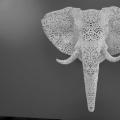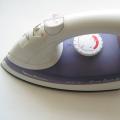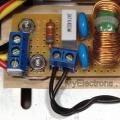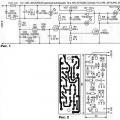Having decided to purchase a 3D pen, you need to be able to make the right choice. On sale you can find a huge number of models for drawing. They differ in their type, the types of plastic used, and functional characteristics. You also need to consider for whom the instrument is purchased - for a child or an adult, a beginner or a professional.
What types of 3D pens are there?
The handles that can be used to draw 3D shapes are divided into two large types. 3D pens for drawing with cold plastic and hot plastic. The material used in hot 3D pens is plastic filaments (ABS, PLA, PRO, KID), which are heated for drawing.
Cold models work on the basis of rapidly hardening resins (photopolymers) charged in them. Crafts quickly harden when exposed to ultraviolet radiation.
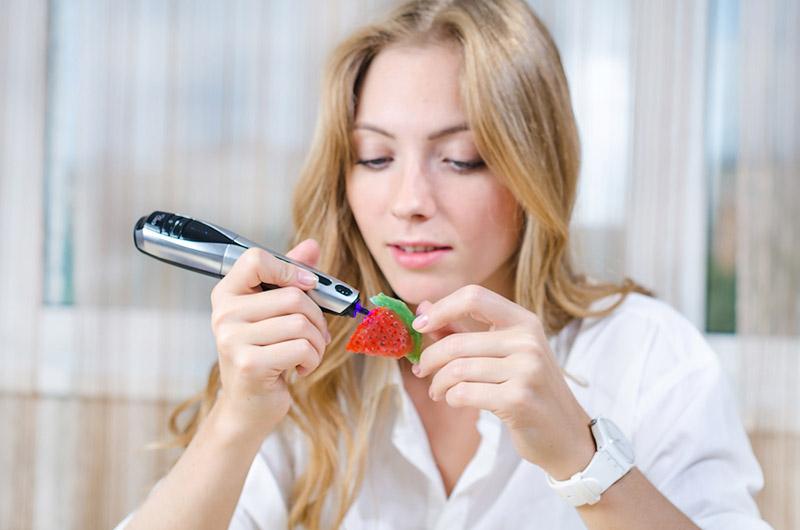
How does a 3D pen work?
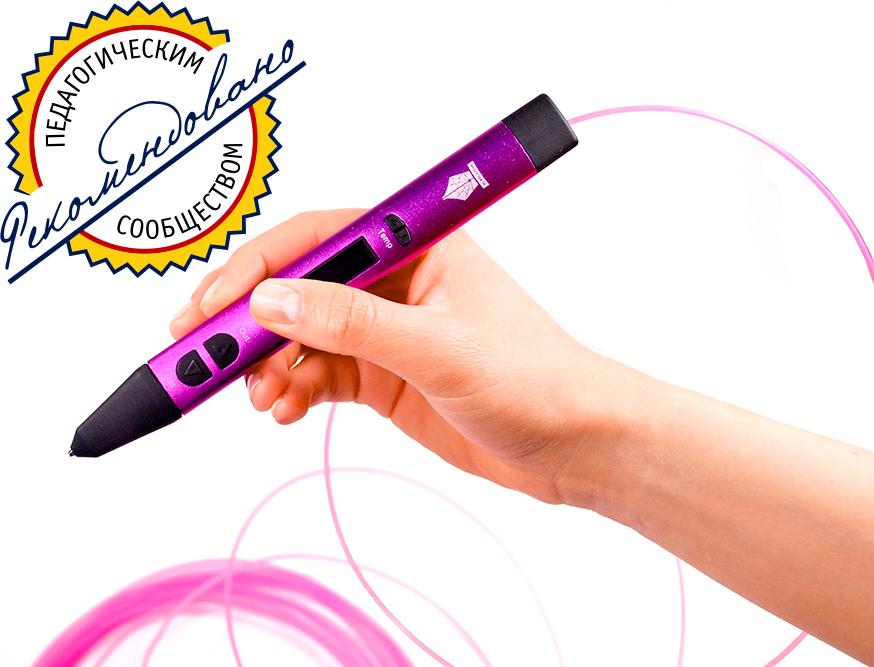
The principle of operation of 3D pens, drawing with hot plastic:
This type of 3D pen needs to be connected to the mains. They can be powered either from a regular outlet, a computer, or from a portable charger. Plastic is a thread with a diameter of 1.75 mm. Before inserting the plastic thread into the nest, you need to set the desired temperature regime. It can be different, depending on the type of plastic:
- ABS - 210 - 240 degrees;
- PLA - 180 - 220 degrees;
- PRO - 200 - 220 degrees;
- KID - 75 - 95 degrees.
After selecting the temperature, wait for the knob to warm up. The heating can be monitored by the illuminated green indicator, or the display will show the maximum value that you have selected. Before inserting the filament into the nest, cut it off at the end with scissors so that there are no kinks, this will prevent the 3D pen from clogging. Once inserted, press the plastic feed button and start drawing. Melted plastic will begin to come out of the nozzle. Start painting in the air or on a surface. Please be aware that the tip of the 3D pen may become hot (not on all models). Be careful, contact may result in burns. After finishing drawing, you need to pull out the plastic thread by pressing the plastic removal button. The plastic will automatically start coming out of the slot. Disconnect the handle from the power supply and wait until it has completely cooled down, then it can be removed.
The principle of operation of 3D pens, drawing with cold plastic:
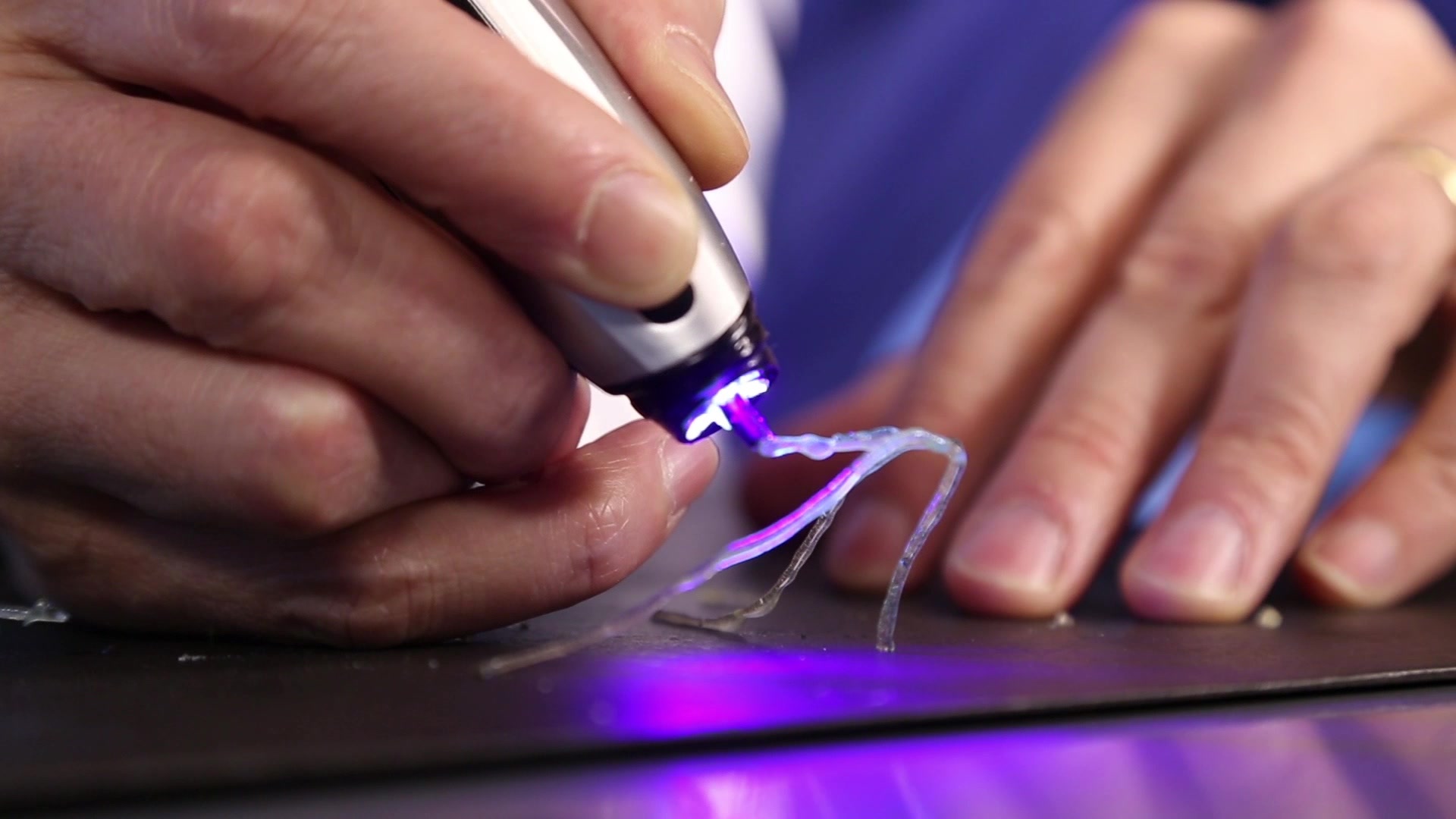
This type of 3D pens does not have a heating element, unlike 3D pens that draw with hot plastic. Photopolymer is fed through the nozzle of the handle. It hardens when exposed to the built-in UV light source. Typically, ink solidifies instantly. Several UV diodes act as a source of ultraviolet light.
In its work, the 3D pen uses cartridges with polymer ink. Photopolymers compare favorably with plastic in that they can be colored, elastic and luminescent, as well as magnetic, and there are also thermopolymers that change color depending on the ambient temperature. But precautions should be taken here as well, for example, when using cold 3D pens, it is recommended to wear special glasses that protect the eyes from ultraviolet radiation. Also, the absence of a heating element makes the presence of a noisy fan unnecessary and eliminates the inhalation of toxic fumes from plastic (in particular, hot plastic).
The 3D pen does not need to be connected to a power outlet or USB port during operation, as they are capable of operating from the built-in battery. The built-in battery in such 3D pens is usually enough for a couple of hours of continuous operation, and the device's charge indicator will tell you when it's time to connect the 3D pen to micro-USB. In order to change the consumable material of a cold 3D pen, it is enough to change the ink cartridge.
UV 3D pens are capable of working in three modes:
- Extrusion of photopolymer with included ultraviolet diodes - the polymer is squeezed out of the handle, illuminated with ultraviolet light and solidifies;
- Squeezing out the polymer without turning on the source of ultraviolet (UV) radiation - the required amount of photopolymer is squeezed out, a form is created, then the light is turned on;
- Turning on LEDs without squeezing out the polymer - this mode allows you to turn on only the UV source, without supplying the photopolymer.
With an ultraviolet 3D pen, you can always first extrude the photopolymer, give it the required shape, for example, using specially designed tools, or a regular toothpick or screwdriver, and then illuminate the finished workpiece with ultraviolet light.
3D pen drawing with hot plastic
The following types of plastic are used in our work: ABS, PLA, PRO and KID. Manufacturers offer devices that work with one or more types of materials. Buying tools that can work on multiple types of materials is beneficial. If one type of plastic runs out, you can always replace it with another.
ABS smells bad when melted. Therefore, when working with it, you need to ventilate the room. Works made with ABS plastic are durable and resistant to aggressive environments - they can be washed, wiped with household chemicals, they are strong and durable. The color palette of ABS plastics is wide from classic to glow-in-the-dark. ABS is more saturated in color, the colors are all "dense". Almost all 3D pens use ABS plastic. Melting point: 210-240 ̊С.
PRO plastic is transparent and elastic. Suitable for large projects. Sturdy enough. Odorless. Light transmittance above 92%. The color spectrum is extensive, saturated glossy colors, luminous, crystalline, imitating metal and glass. Melting point: 200-220 ̊С.
Devices working on organic material are suitable for children's creativity. These include PLA and KID biodegradable plastic.
PLA is environmentally friendly. It is durable but more rigid. Due to it, 3D objects become smoother and more shiny. When heated, it gives off the smell of sweetish cooking oil. This plastic is more "sticky". But in a solid state, as a rule, it is more "brittle". PLA works are like delicious clear candy. With PLA plastic, only pens equipped with a display work. Melting point: 180-220 ̊С.
KID plastic is reusable. Used plastic can be used repeatedly, you just have to pour hot water on it. And he becomes flexible, like plasticine. Plastic is recommended for drawing with 3D pens for young children, it is safe from thermal burns and does not emit odors when drawing. The color spectrum is limited only to natural shades. Melting point: 75-95 ̊С.
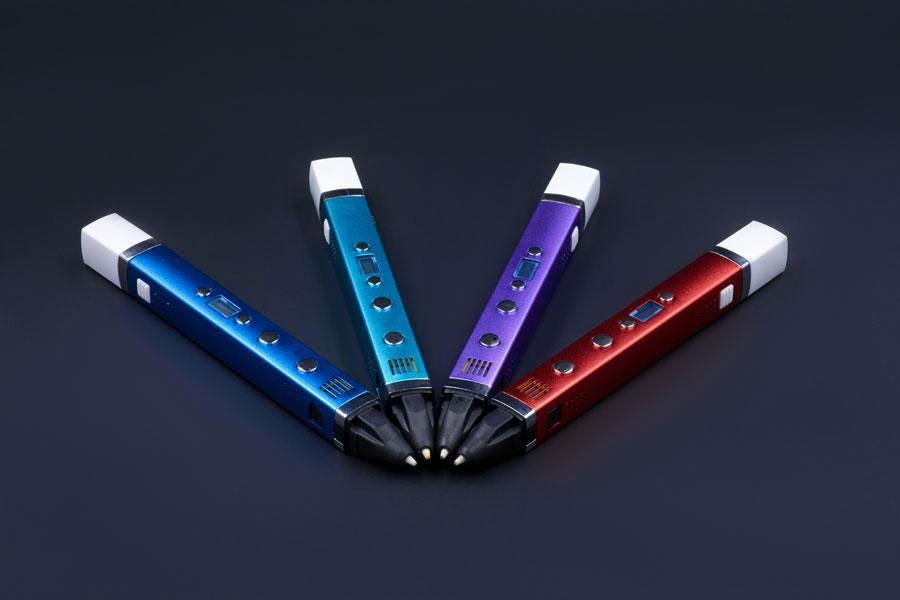
3D pen drawing with cold plastic
A photopolymer is a plastic that hardens when exposed to ultraviolet radiation. This plastic is used in both 3D printing and 3D drawing. It is very comfortable. Photopolymers have become very popular in the United States because of their cold curing, they are considered safer than hot plastics.
The advantage of the pens of this model is that different materials can be used for refilling them. The resins on which the devices work are colored, magnetic, elastic, aromatic. Another plus of drawing tools is that they can work without being connected to the mains. They don't need a constant source of electricity to melt plastic. Therefore, such handles are convenient when traveling, when you need to keep your child busy outside the house.
Unlike hot models, photopolymer-based devices are practically silent. They do not have a fan to cool the molten plastic, so they do not make loud noises during operation.
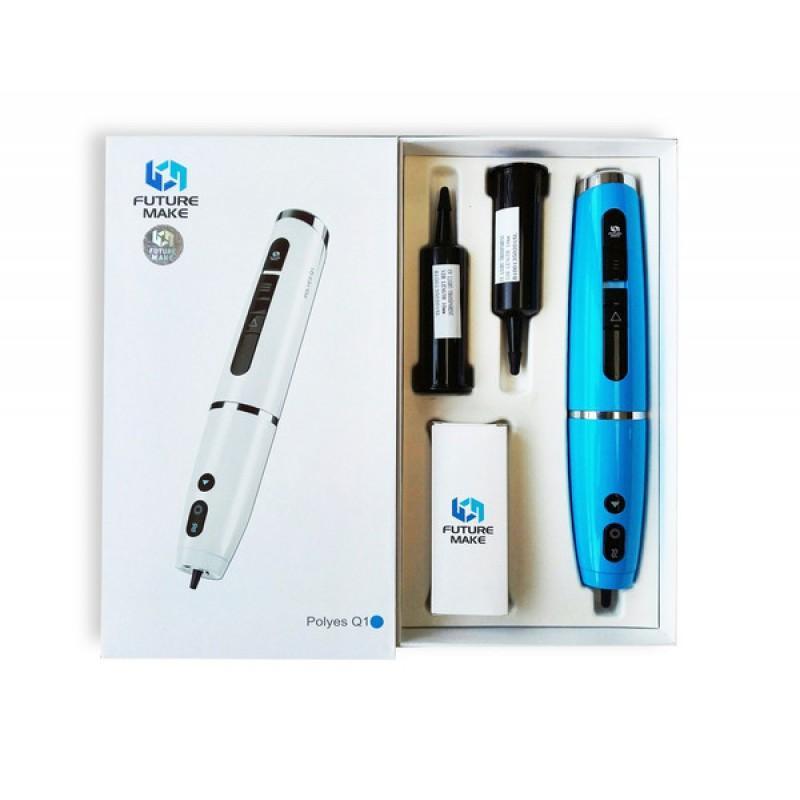
What can be done with a 3D pen?
Pens for drawing three-dimensional objects open up tremendous possibilities for creativity. From them you can create toys, souvenirs, all kinds of patterns for decorating things and the interior. Also, the devices are useful at home for repairing plastic products. If the item is damaged, then if you buy a plastic thread of a suitable color, it will be possible to quickly restore it without going to a workshop. With the device, you can create layouts for presentations that involve the use of fine and subtle details.
Handles allow you to create any complex shape objects. Therefore, they have found their application everywhere - in children's creativity, everyday life, scientific laboratories, industrial enterprises, in the business of selling souvenirs that the seller can make directly in front of the client.
Advantages and disadvantages of 3D pens using hot and cold plastic
3D pens drawing with hot plastic:
Advantages:
- Large assortment of 3D pens
- Ability to draw in space and on paper (a stencil may be included with some drawing devices)
- Convenient ergonomics of controls
- Wide range of working materials
- Affordable prices
- Crafts are durable and colorful
Flaws:
- You can burn yourself on the nozzle of the handle. Children should be supervised to paint. It is quite difficult to get a burn.
- Limited by the length of the plastic
3D pens drawing with cold plastic:
Advantages:
- Lack of heating elements
- Fully autonomous operation, due to the built-in battery
- Wide range of inks (photopolymers)
Flaws:
- High cost, there are models with low prices, but the quality is inferior to "hot handles"
- Large handles, inconvenient to hold in a child's hand
- Crafts are fragile and dull
- Bad smell
- UV radiation in large quantities, harmful to eyes
How to choose a 3D pen?
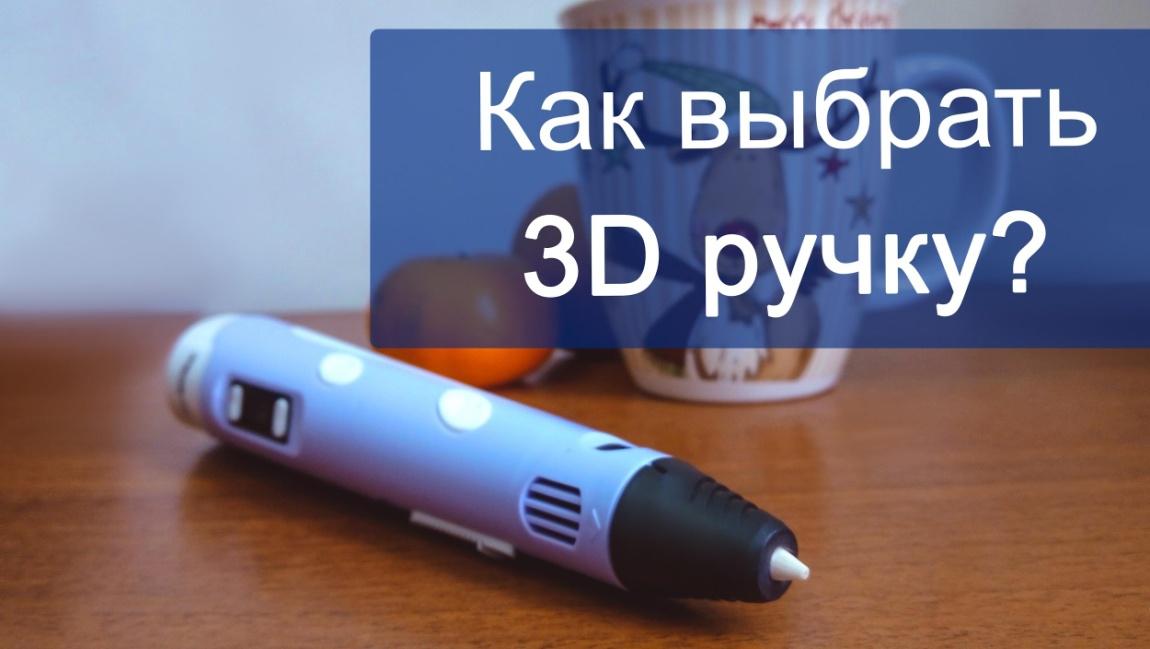
Before making an informed choice, you should study the features of the 3D pen. And based on the knowledge gained, make a choice.
- Technical features.
1.1 Dimensions of handles. Cold handles are larger than hot ones. Since they have a built-in cartridge. The length of the handles varies from 17 to 18.8 cm. Weight also plays an important role. The lighter the handle is, the more comfortable it is to hold it in your hand. Most often, you can find models weighing from 36 to 65 grams.
1.2 Display. The display is needed to monitor the temperature regime and the speed regime of plastic feeding. The display comes in two types: OLED and LCD. The only difference is that OLED is brighter.
1.3 Plastic feed rate. The more plastic feed rates, the more options for detailing crafts. The speed ranges from 1 to 9. Each stick has a different number of speeds.
1.4 Handle nozzle. There are both ceramic and metal. The metal nozzle is more durable than the ceramic one.
1.5 Nozzle diameter. Varies from 0.4 to 1 mm.
1.6 Auto-off function. In the absence of activity with the 3D pen, it cools down after 2-5 minutes.
1.7. Automatic feeding and removal of plastic. To start drawing or to remove the plastic, just press the button twice, no need to hold your finger on the button. This makes the drawing process easier.
1.8. Power type: from USB, built-in battery, from a regular socket. The built-in battery or Power Bank makes it possible not to depend on unnecessary wires. The drawing process becomes much more convenient.
- Working material.
It is important to pay attention to the type of material that this or that 3D pen uses in the work. Since separately you need to buy plastic or cartridges. And if the plastic doesn't fit, you ruin the pen and it won't work. - Operational safety.
When working with a device that connects to an outlet, you must follow the rules prescribed for the operation of electrical appliances. Also, do not touch the nozzle of the device when working with hot handles, you can get burned. It is not recommended to let a child under 4 years old use a drawing tool. There are handles designed for the little ones from 4 years old. When buying a 3D pen, you should pay attention to the recommended age of the child who will use it. Parents should make sure that the child does not get burned, does not damage the wire that goes from the device to the outlet. This applies to pens that use ABS, PLA, PRO plastic. Pens that draw with KID plastic are impossible to burn with them. - Price category.
The cost of 3D pens varies from 700 to 11990. But if the pen is not expensive, it does not mean that it is bad. Simply by technical features, it is inferior to more expensive models. - Manufacturer.
And most importantly, there are enough fakes of the most popular drawing devices on the market. Most of all there are handicrafts made by the manufacturer MyRiwell. Buy 3D pens from trusted stores. - Reviews.
This is one of the most important parameters to watch out for. Comments from users who have used a device can tell a lot about a particular model. It is also worth relying on the opinion of an experienced operator - the seller.
Which one is better to choose?
Three-dimensional drawing devices are available from different manufacturers. Several models have won good reviews from consumers. They have become popular due to their quality and ease of use.
3D Spider Pen. This is the personification of the entire Russian market for 3D pens. Consumers choose it for the unique design of the entire line. It includes such popular 3D pens as: PRO, KID, BABY, PLUS, SLIM, START. All pens are designed according to the latest trends in cutting-edge technology. Spider Pen means compactness and ease of use of all products, affordable prices, strength and quality of handle parts, adjustable plastic feed rate, a large number of color solutions for cases, adjustable temperature of the spout heating, information diode indicators, quick response to user requests. All products are certified and Russified. The expanded set of goods opens up the opportunity for users to draw in space! Products are provided with a 24 month warranty. They begin to draw with these 3D pens at the age of 4. And as a rule, children choose only the best, and this is the Spider Pen!
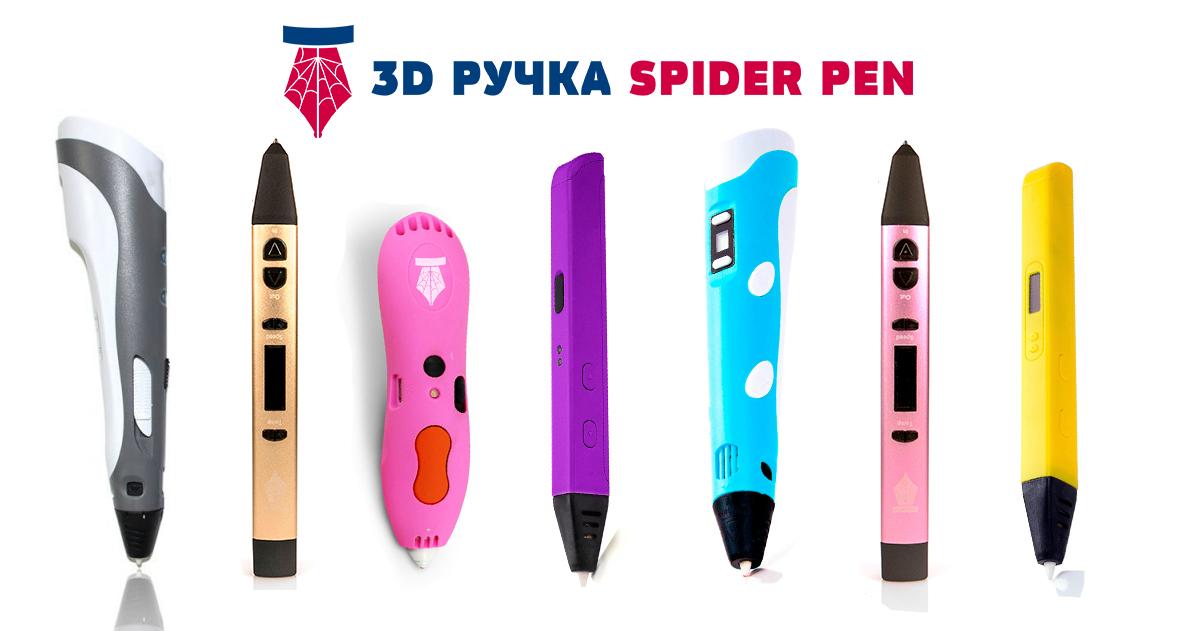
3D pen Myriwell-3. This model is distinguished by the ergonomic shape of the case, ease of loading plastic, large buttons. It is suitable for beginners who want to master the technology of three-dimensional drawing. Myriwell, from a Chinese manufacturer, was the first to develop a ceramic tip 3D pen. The brand produces innovative products every year and is a benchmark for other manufacturers. The high bar is achieved due to good quality at an affordable price.
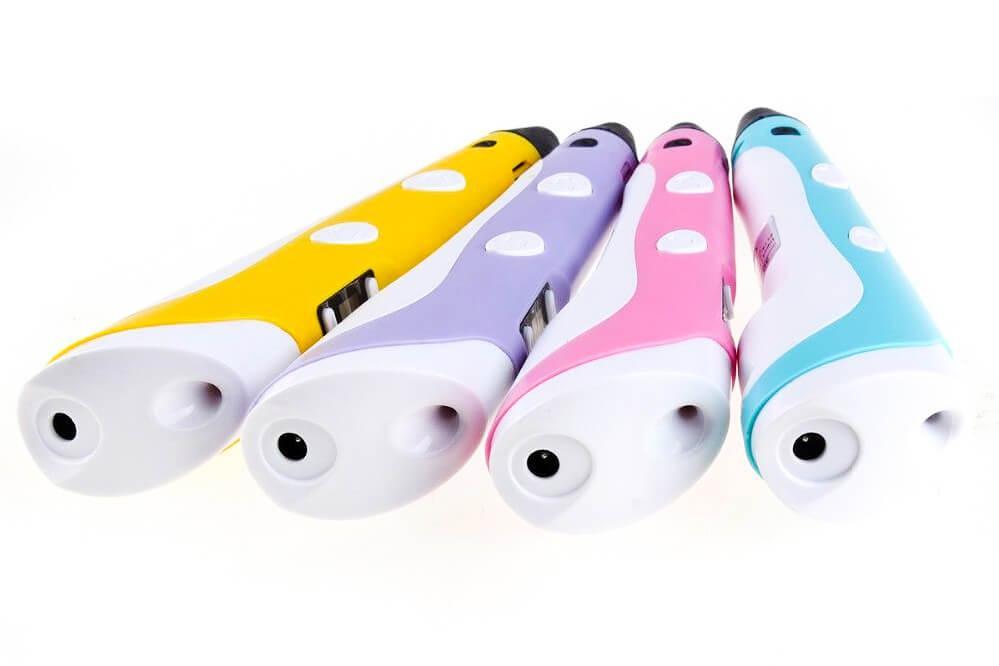
Funtastique 3D pen. Devices of this brand work with different types of plastic, allow you to control the speed of its feeding. Informative OLED - display, pleasant to the touch plastic, auto-off mode - ideal for decorating crafts.

3D pen 3Doodler 2.0. A pen that is suitable for mastering plastic drawing. Minus - has a limitation on the thickness of the thread. Only works with 2.85mm plastic. Works without connecting to a PC and using software. Stylish design and low noise level is a great opportunity to enjoy the process of drawing.
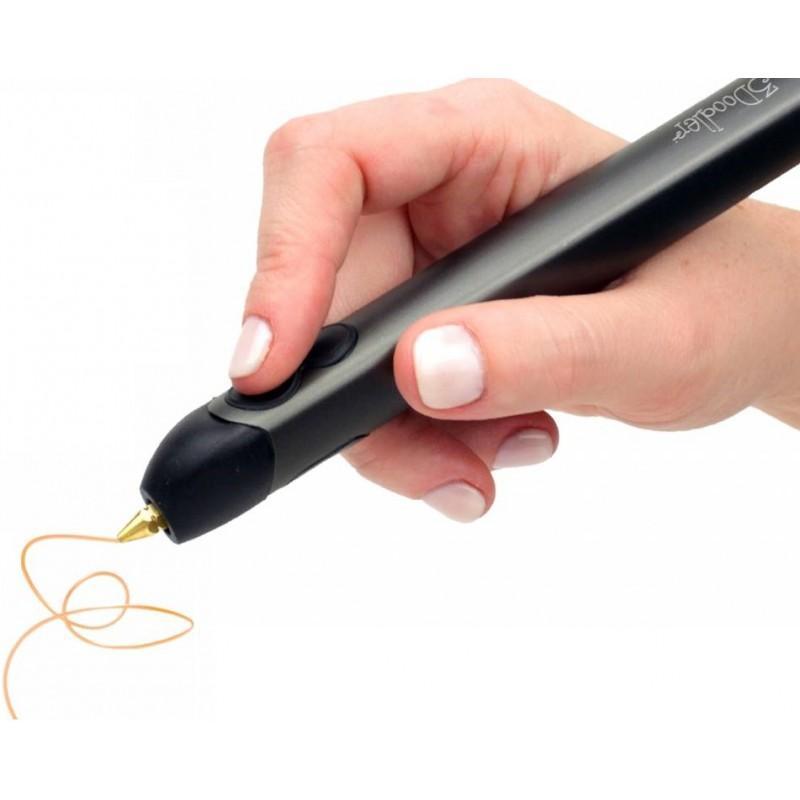
3D pen 3D Simo Mini. This is a model with a lot of features. She has attachments for burning, cutting, soldering, painting. 3D Simo basic - a pen specially designed for children from 8 years old. Safe and bright gadget that will not let your child get bored. It comes with a book with 24 stencils.
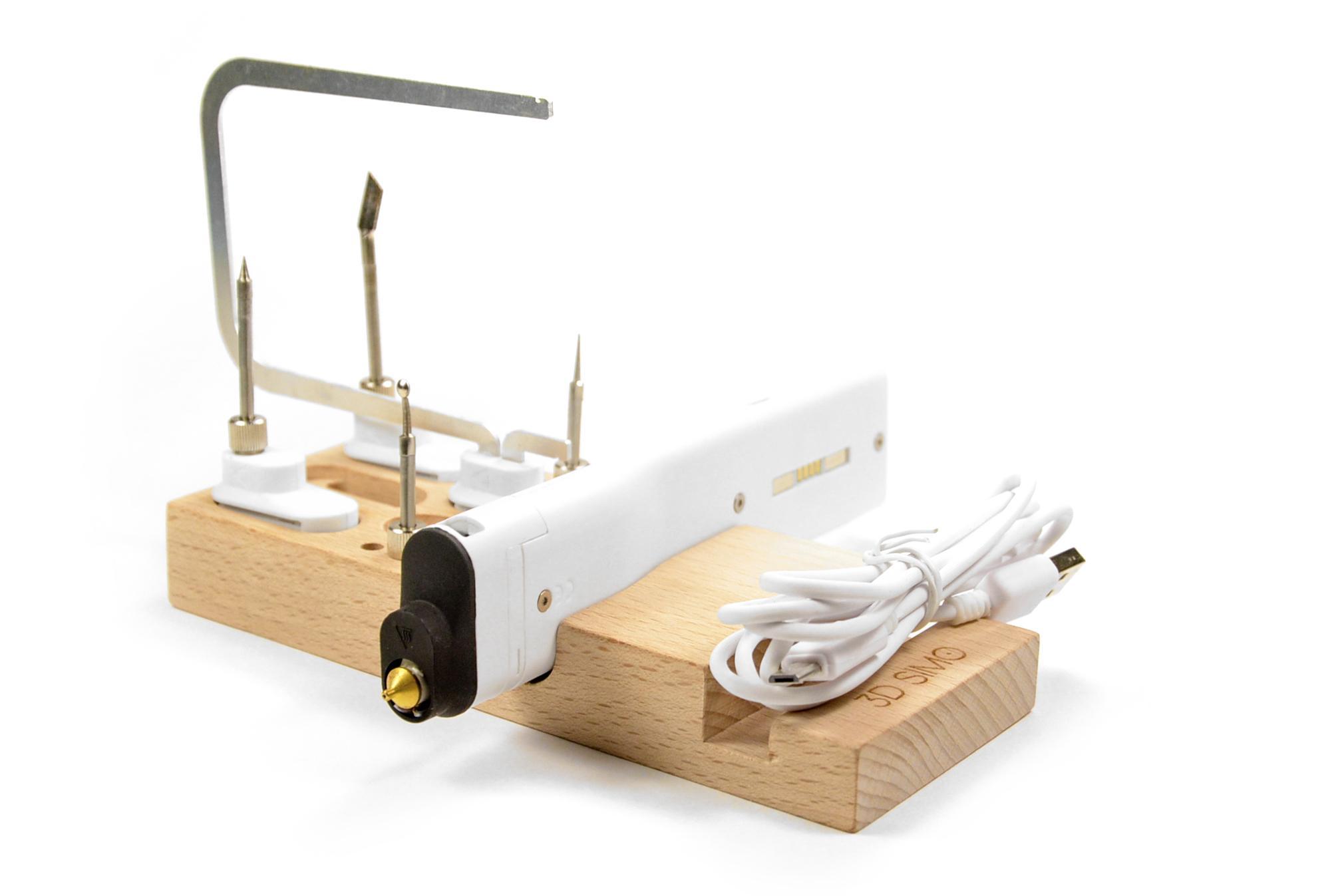
CreoPop 3D pen. The device works with cold ink, has no wires, and allows you to draw in the air. The model is ideal for children's creativity. Due to the cold hardening, it is considered safer compared to pens that use hot plastic in their work.
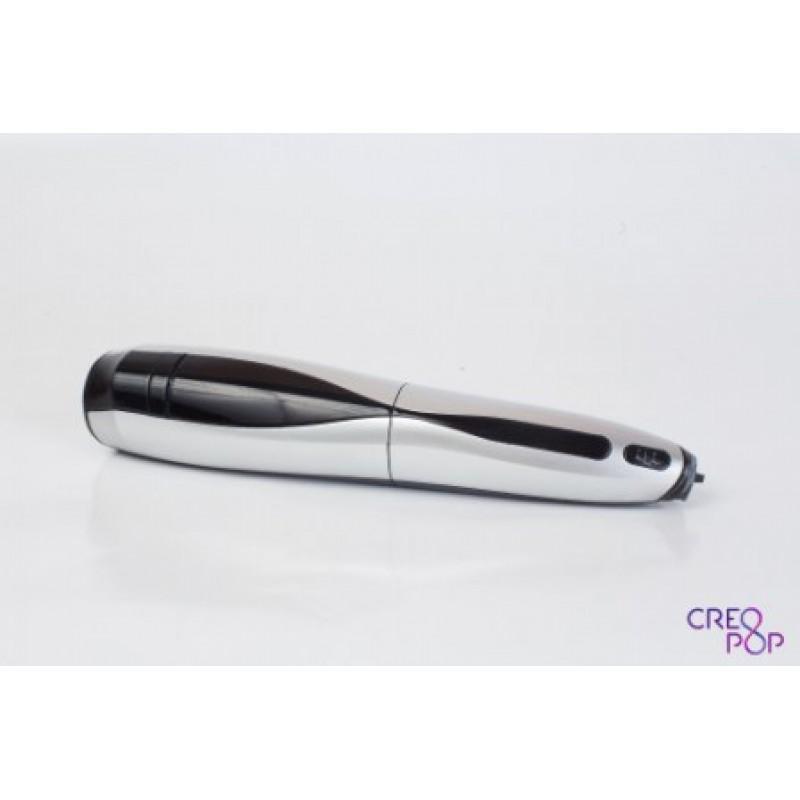
3D Polyes pen. An inexpensive model that uses photopolymers allows create translucent objects. Decently stylized, and it seems as if she came down from space to us. Crafts created with it will delight and fascinate you with their brilliance for a long time.
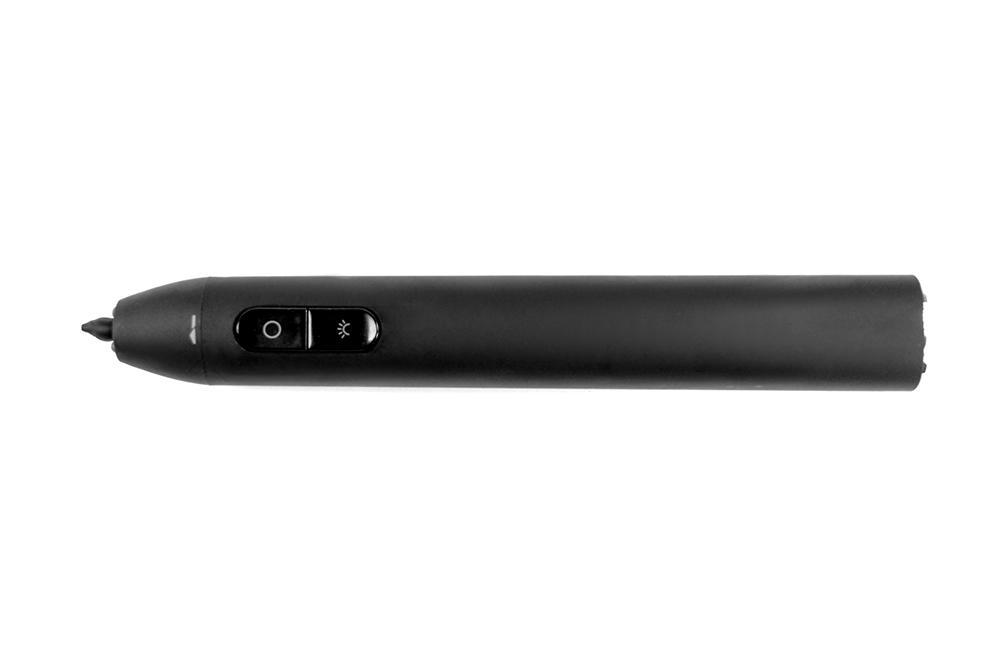
3D pen 3D Magic Glue. An inexpensive model that runs on a polymer gel. Does not heat up, does not require connection to an outlet. The choice of sets is wide from one, two and four pens per set. Each box has its own drawings, which means different stencils inside.
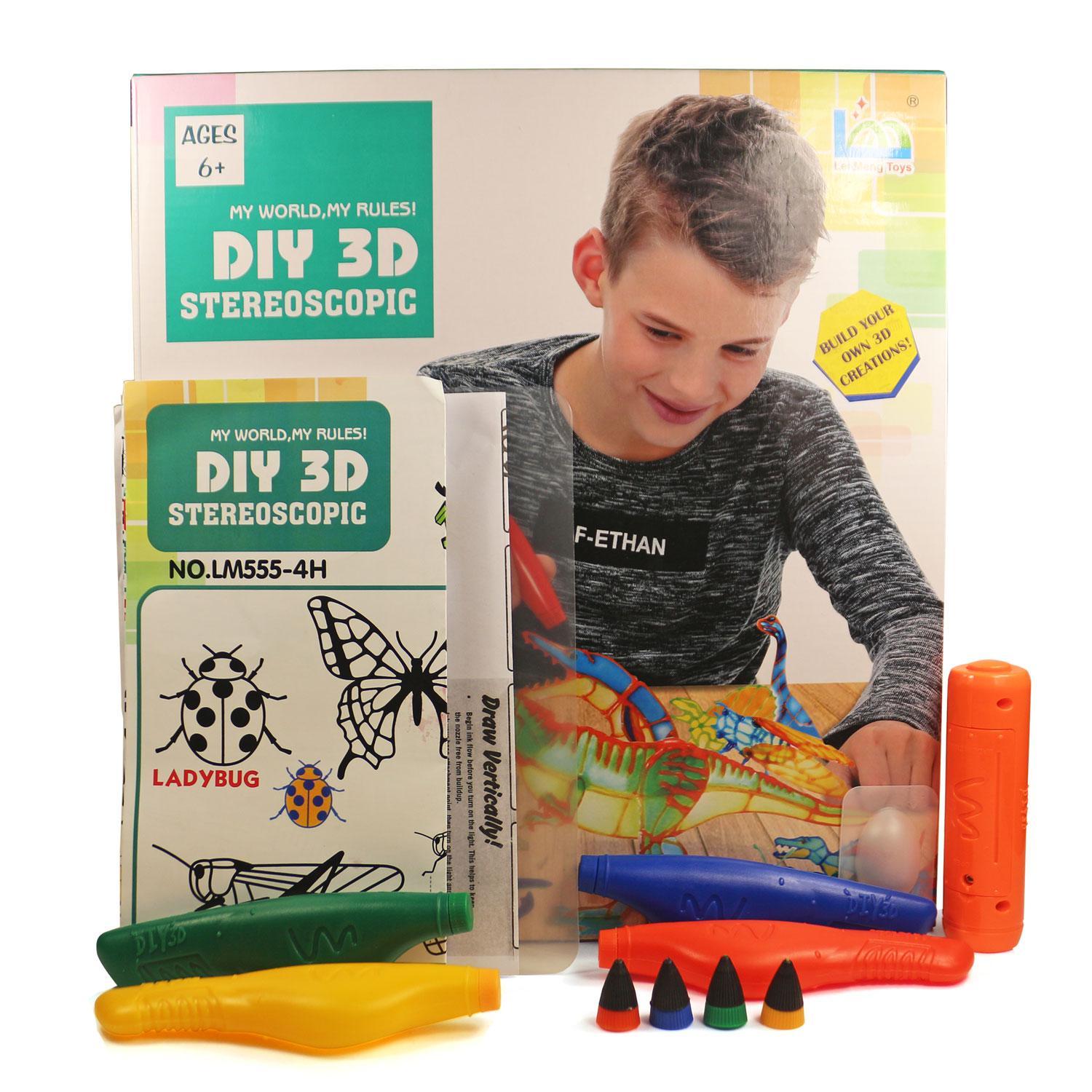
Conclusion
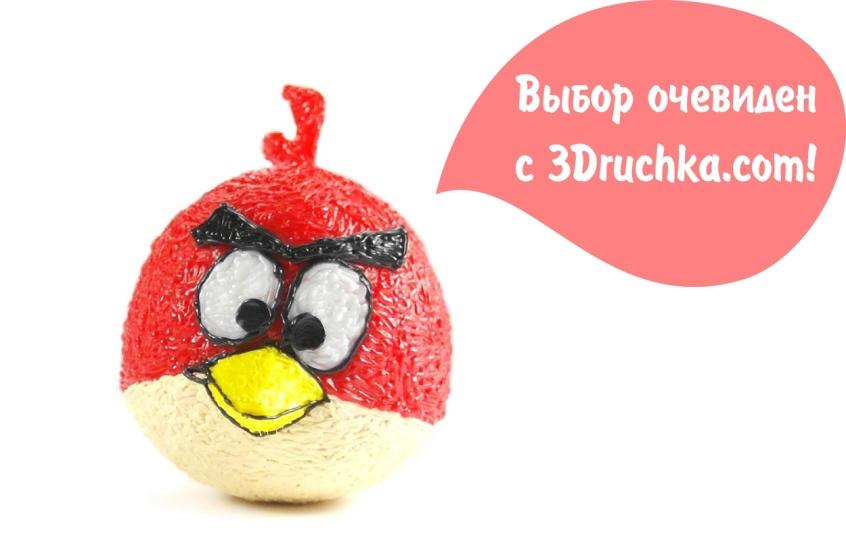
From the above, we can conclude that the choice of a 3D pen will depend on who the 3D pen is intended for. Whether for a child, adult, beginner or professional. Among all 3D pens, there are several of the most popular models:
Spider Pen Pro is the most modern model among hot pens at the moment, suitable for both children, thanks to its comfort for a child's hand and a metal spout that will not break if a child drops it, and for professionals, thanks to its functionality and modern design. The plastic feed buttons are located closest to the spout, which greatly simplifies the drawing process, especially for children, the metal body and elegant design make it an excellent gift for any occasion, this is the 3D pen that the whole family will use to draw.
Creopop - the most popular of the 3D pens on photopolymer base - is the very first 3D cold ink pen in the world. At the same time, it is not the cheapest option, but on the other hand, the most reliable one. despite their simplicity, photopolymer pens also have their own device features.
Spider Pen Plus - The golden mean when choosing a 3D pen that draws with hot ink - this pen draws with all types of plastic, for a long time it was the most versatile and popular 3D pen. This model was the main one for 3D modeling and has proven itself as a reliable functional and comfortable 3D pen.
Myriwell 200A - The cheapest version of the 3D pen at the moment is certainly not a fully functional model, but it is quite suitable for drawing. If you are willing to sacrifice convenience, durability and avoid using different types of plastic, then this pen is for you. Models drawn with this 3D pen will not differ from those drawn by others.
Spider Pen Start -If you are looking for a simple and reliable model, then I can advise you on this particular pen. It will be difficult to break it even if you haven't read the instructions at all. it uses only one type of plastic and you do not need to switch temperature modes. This is the very first 3D pen with a ceramic tip and remains one of the most popular models today.
3D Simo -Manufacturer Czech Republic and that says a lot, the creators took a responsible attitude to the functionality of this device and to the accessories that complement it. This is not just a 3D pen - it is a multifunctional tool that includes not only a 3D pen, but also a burner, a foam molding device and a soldering iron, as well as several attachments for various applications, and many accessories can also be purchased.
That's all I wanted to tell you about this amazing and now very popular invention called 3D pen.

